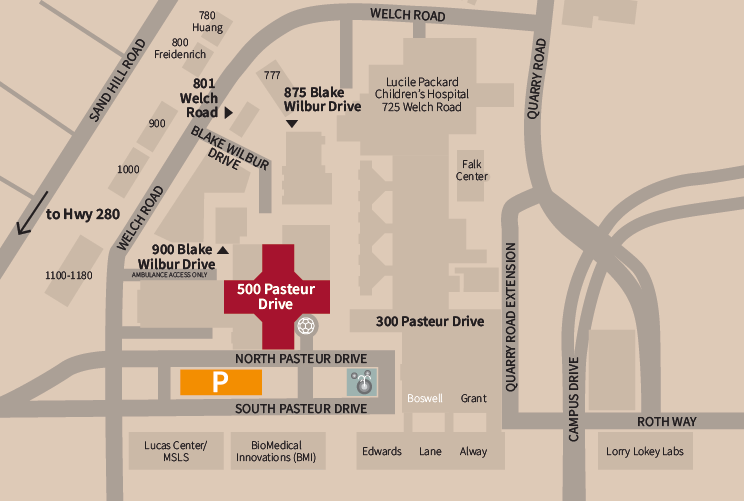Home Care in Menlo Park, California
To Learn More About Home Care Services Available in Menlo Park, Please Fill Out Our Form Below. One of our care professionals will connect with you to answer your questions.
More Information About Menlo Park, CA
As of the census of 2009, there were 33,690 people, 12,543 households, and 7,248 families residing in the city. The population density was 3,441.3 inhabitants per square mile (1,328.7/km2). There were 14,026 housing units at an average density of 1,432.7 per square mile (553.2/km2). 64.2% spoke English, 19.5% Spanish, other Indo-European 4.2%, 4.6% Chinese or Mandarin, and other language 0.7%, as their first language from estimate census 2009.
There were 12,543 households, out of which 25.8% had children under the age of 18 living with them, 41.5% were married couples living together, 10.8% had a female householder with no husband present, and 45.67% were non-families. 35.1% of all households were made up of individuals, and 11.1% had someone living alone who was 65 years of age or older. The average household size was 2.46 and the average family size was 3.15.
In the city, the population was spread out, with 25.8% under the age of 18, 9.1% from 18 to 24, 31.5% from 25 to 44, 20.4% from 45 to 64, and 14.2% who were 65 years of age or older. The median age was 32 years. For every 100 females, there were 94.0 males. For every 100 females age 18 and over, there were 90.6 males.
As of the 2000 estimate census, the median income for a household in the city was $82,609. Males had a median income of $77,766 versus $59,101 for females. The per capita income for the city was $51,341. About 5.9% of families and 7.3% of the population were below the poverty line, including 9.8% of those under age 18 and 8.7% of those over age 64. As of 2009 the median income for a family was $123,251.
- Joan Baez, folk singer
- Isaac Baron, professional poker player
- Lindsey Buckingham, musician
- Henry Cowell, composer
- Brandon Crawford, San Francisco Giants shortstop
- Abby Dahlkemper, Professional soccer player, 2019 World Cup champion with USWNT
- Tierna Davidson, professional soccer player, 2019 World Cup champion with USWNT
- Marion Dorn, textile designer
- Steve Duda, musician and DJ
- Jeanne DuPrau, author
- David Eagleman, neuroscientist and author
- Nancy Farmer, author
- Paul Goldstein (born 1976), tennis player and coach
- Ari Greenberg (born 1981), world junior contract bridge champion
- Vince Guaraldi, jazz musician known for composing music for the Peanuts animated specials
- Chris Gulker, photographer, writer
- Jack Herrick, founder of wikiHow
- Jon Huntsman, Jr., former Utah governor
- Edward Michael Keating (1925–2003), magazine publisher, journalist, author, lawyer; founder of Ramparts, member of the New Left movement.[45]
- Ken Kesey, author
- William R. Larson, founder of Round Table Pizza
- Milton Latham, railroad baron and politician
- Josie Maran (born 1978), supermodel
- Abraham Maslow, co-founder of Humanistic Psychology
- Bob Melvin (born 1961), Major League Baseball player and manager
- Fred Moore, political activist
- John Naber, Olympic swimmer
- Stevie Nicks, musician
- Elizabeth Osborn, equestrian vaulter
- Robert Rich, musician
- Ariel Rittenhouse, Olympic diver
- Secondhand Serenade, rock band founded in Menlo Park
- Ram Shriram, founding investor of Google
- Courtney Thorne-Smith, actress
- Thorstein Veblen, sociologist known for “Theory of the Leisure Class“
- John Vesely, musician/songwriter
- Bob Weir, founding member of The Grateful Dead
- Billy Ray White, first African-American mayor of Menlo Park[46]
- Marco Zappacosta, co-founder of Thumbtack
The Stanford Hospital complex is comprised of two, adjacent buildings. If you are uncertain of your destination, please call: 650-723-4000. Guest Services will be pleased to assist you. A single parking garage serves and offers easy access to both buildings. Visit Stanford Hospital at 300 Pasteur Drive to learn more about the other building.

500 Pasteur Drive
Stanford, CA 94305
International Patients
Phone: +1 650-723-8561
Email: IMS@stanfordhealthcare.org
Healing humanity through science and compassion, one patient at a time.
Stanford Health Care, along with Stanford Health Care Tri-Valley and Stanford Medicine Partners, is part of the adult health care delivery system of Stanford Medicine. Combining clinical care, research, and education to advance the understanding and practice of medicine, we provide compassionate, coordinated care personalized for the unique needs of every patient.
We are proud to provide patients with the very best in diagnosis and treatment. And we are pioneering leading-edge therapies that will change the way health care is delivered tomorrow.
Stanford Medicine is an ecosystem comprising the School of Medicine and the pediatric and adult health care delivery systems. Together, we harness the full potential of biomedicine through collaborative research, education, and clinical care for patients of all ages. Precision Health is at the core of what we do, preventing disease before it strikes and treating it decisively when it does. Together, uniting our diverse perspectives and collective expertise for the greater good, we are Stanford Medicine.
Delivering Better Care
Stanford Health Care is creating new delivery models, leveraging our advanced resources to create seamless continuity of care for every patient. From our suite of virtual care services – to our primary care offices throughout the Bay Area, outpatient clinics in Redwood City and Palo Alto, and Stanford South Bay Cancer Center – people from around the region and around the world turn to Stanford Health Care for comprehensive solutions to meet all of their health care needs.
At the center of our health system will be the most advanced hospital in the world. The new Stanford Hospital will make our bold vision for compassionate, coordinated, leading-edge care – personalized for the unique needs of every patient – a reality for more people than ever before.
Although the leadership of Stanford Health Care and Stanford University work in close partnership, the hospital and the university are separate legal entities. Stanford Health Care cannot access the university’s endowment, nor is the endowment part of the hospital’s budget.
Quality of Care
We are committed to providing, clear, accurate and honest information about our quality of care, so that patients can make informed health care decisions.
Uniquely Stanford
We are responsible for some of the most important medical advances of the 20th century, and we continue building on our legacy in the 21st.
Community Partnerships
We dedicate considerable resources to improve the health and well-being of the community.
Bondholder Information
Obtain information about Stanford Health Care’s bond programs and finances.
340B Savings in Action
The 340B program creates opportunities for Stanford to offer expanded services to improve the health of our community, and ensure that the cost of prescription medication is not a barrier for patients in need.
Crisis Standard of Care
As a Level 1 trauma center, Stanford Health Care always has a “crisis standards of care” document in place, which defines our organization’s plans for responding in the event that resources — such as beds, staffing, space or equipment — become scarce or unavailable to provide normal standards of care. We are currently functioning with normal surge protocols.
Little House
At Little House, we strive to empower older adults with the freedom to stay active in their community. We offer a variety of health and wellness services that enrich the lives of seniors in the mid-peninsula through fitness classes, art activities, educational lessons, and more.
Our History
We come from a long-line of progressive, forward-thinking folks committed to community welfare. In 1947, our founder Beth Kuechler rallied a group of passionate women to create Peninsula Vounteers. Their first project was Stanford Day Care Nursery, in cooperation with Stanford University, which exists to this day. PVs then shifted towards education, creating scholarship programs for a variety of universities until 1981. Now, PVI is committed senior care and is home to 300 members.
800 Middle Avenue
Menlo Park, CA 94025
Phone:(650) 272-5000
Fax: (650)-326-9547

About San Mateo County
California’s San Mateo County, sometimes known as the County of San Mateo, is a county in the United States. There were 764,442 people living there as of the 2020 Census. The county seat and third-most populous city in the region after Daly City and San Mateo is Redwood City.
About Menlo Park, California
Menlo Park is a city located on the eastern border of San Mateo County in the Californian region of the San Francisco Bay. On the north and east, it is bounded by San Francisco Bay; on the south, by East Palo Alto, Palo Alto, and Stanford; and on the west, by Atherton, North Fair Oaks, and Redwood City.
Driving Directions from Menlo Park to Aviva In-Home Care
Menlo Park California
Get on US-101 N from Oak Grove Ave, Middlefield Rd and Marsh Rd
9 min (2.9 mi)
Follow US-101 N to Mariposa St in San Francisco. Take exit 433A from US-101 N
26 min (26.6 mi)
Drive to Rhode Island St
2 min (0.3 mi)
Aviva In-Home Care
350 Rhode Island St Suite 240, San Francisco, CA 94103
Directions from Menlo Park to Aviva In-Home Care
Aviva In-Home Care Provides Senior Home Care in Menlo Park
What is companion care at home?
Companion care at home is a type of in-home care that involves providing companionship, support, and assistance to seniors or individuals who need help with daily tasks and activities. This type of care can include help with things like grocery shopping, meal preparation, light housekeeping, and transportation to appointments, as well as social activities and emotional support. Companion care can be an important resource for people who want to remain independent and in their own homes, but need a little extra help to do so.
What is the difference between a caregiver and a companion?
A caregiver is a person who provides care and support to someone who is unable to take care of themselves, such as a senior citizen or an individual with a disability. A caregiver may provide a range of services, from basic assistance with daily tasks, such as bathing and dressing, to more complex medical care, such as administering medication or providing wound care. In contrast, a companion is someone who provides social and emotional support to an individual, typically by engaging in activities together and providing companionship. A companion may also provide some basic assistance with daily tasks, but their primary focus is on providing emotional support and companionship.
What are the duties of a companion or sitter?
The duties of a companion or sitter can vary depending on the individual’s needs and preferences. In general, however, the primary role of a companion or sitter is to provide social and emotional support, as well as some basic assistance with daily tasks. This may include things like engaging in conversation and activities with the individual, providing companionship and emotional support, and helping with light housekeeping tasks, such as laundry and meal preparation. A companion or sitter may also provide some basic assistance with personal care, such as helping with bathing and dressing and may help with transportation to appointments or errands. Overall, the goal of a companion or sitter is to help the individual maintain their independence and quality of life.
What does a companion do for the elderly?
A companion for the elderly typically provides social and emotional support, as well as some basic assistance with daily tasks. This can include things like engaging in conversation and activities with the senior, providing companionship and emotional support, and helping with light housekeeping tasks, such as laundry and meal preparation. A companion for the elderly may also provide some basic assistance with personal care, such as helping with bathing and dressing and may help with transportation to appointments or errands. The goal of a companion for the elderly is to help the senior maintain their independence and quality of life and to provide them with the support they need to continue living at home.
Does Medicare cover a companion?
Medicare does not cover companion care services, which are considered to be non-medical in nature. Medicare, which is a federal health insurance program for seniors and individuals with disabilities, covers a range of medical services and treatments, but it does not cover non-medical services, such as companion care. If you are in need of companion care services and have Medicare, you will need to pay for these services out of pocket or through private insurance. It’s important to check with your insurance provider to determine what types of services are covered.
What is the difference between companion care and personal care services?
Companion care and personal care services are both types of in-home care that can be provided to seniors and individuals with disabilities who need help with daily tasks and activities. The main difference between the two is the focus of the care. Companion care is focused on providing social and emotional support, as well as some basic assistance with daily tasks, such as meal preparation and light housekeeping.
Personal care services, on the other hand, are focused on providing more extensive assistance with activities of daily living, such as bathing, dressing, and toileting. Personal care services may also include more advanced medical care, such as wound care and medication management. Overall, the main difference between the two is the level of care provided and the focus of the services.
Why Choose Aviva In-Home Care for Companion Care Services?
- A model based on family-centered care
Aviva works closely with your family, throughout the care process, to make informed decisions about the services and support the client and family receive. - Highly experienced staff
An expert management team that understands healthcare delivery, caregivers with multiple years of experience, and an organization focused on continual staff training & education. - Nurse oversight of care
Utilize the clinical expertise of RN supervision to ensure that we deliver a quality experience, are compliant with physician orders, and are continually improving. - Private, San Francisco-based business (not a franchise)
Our focus is on the well-being of San Francisco’s elderly residents – your community is OUR community. - Embedded Care Management
We ensure optimal care coordination by providing 2 hours of weekly case management time (by our Client Care Manager) free of charge for each client. - Hands-on management by the owner
Direct owner involvement in the administration of care, and communication with families. - Affiliation with a national network of home care agencies
Member of The Seniors Choice, an organization that shares best practices, promotes continual learning/education, and develops service competencies within its network.




